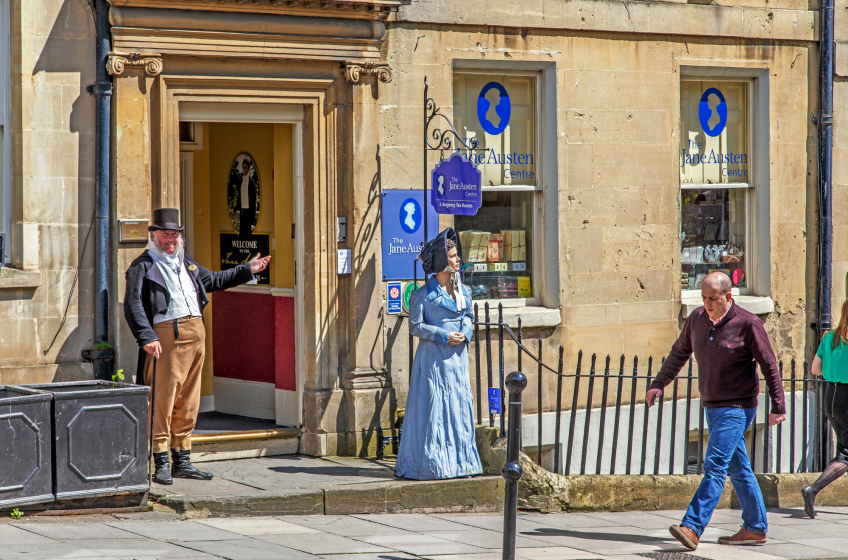Jane Austen's Life in Bath
a visitor's overview of the famous author's connections with the City of Bath
Jane Austen is a renowned novelist of the Georgian era, best known for her witty and insightful portrayals of the lives of English gentry. Her connections to the city of Bath are significant, as the city played an important role in her personal and professional life.
Bath was a fashionable and prosperous city during Austen's time, known for its elegant Georgian architecture, natural hot springs, and social scene. Austen's father, George Austen, had retired in Bath in 1800, and Jane and her family frequently visited the city. It was during these visits that Austen gained inspiration for some of her most famous works, including Northanger Abbey and Persuasion.
In addition to providing literary inspiration, Bath was also a place of personal significance for Austen. In 1795, at the age of 19, she fell in love with a young man named Tom Lefroy while attending a ball in the city. Although the relationship was brief and ultimately did not lead to marriage, it had a lasting impact on Austen, who later used it as inspiration for the romantic relationships in her novels.
Austen's connection to Bath is also evident in her novel Northanger Abbey, which is set in the city. The novel satirizes the popular Gothic novels of the time and portrays the city's social scene, including the activities of the upper class and the growing popularity of public spaces such as the Pump Room and Assembly Rooms.
Austen's experience in Bath also influenced her writing in other ways. She observed the behavior of the wealthy and the manner in which social status impacted their lives, providing insight into the cultural norms of the time. Her observations of Bath society are evident in her novels, which often focus on the social interactions and relationships of the upper class.
Despite her personal and literary connections to Bath, Austen did not have an easy relationship with the city. She was critical of its social scene, which she saw as superficial and lacking in genuine connection. Additionally, she found the city's fashion to be overly ostentatious and lacking in elegance. Despite these criticisms, however, Austen's connection to Bath remained strong throughout her life and career.
Today, Bath remains an important destination for Austen fans and literary enthusiasts. Many of the city's landmarks, such as the Pump Room and the Assembly Rooms, continue to attract visitors who are interested in experiencing the city's Georgian past. Austen's connections to Bath continue to be celebrated, and her influence on the city's cultural identity is undeniable.

